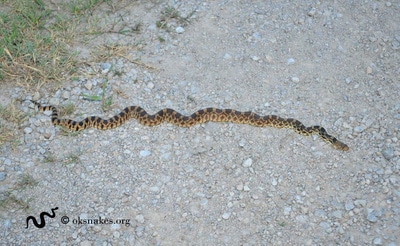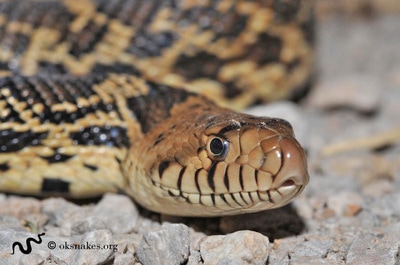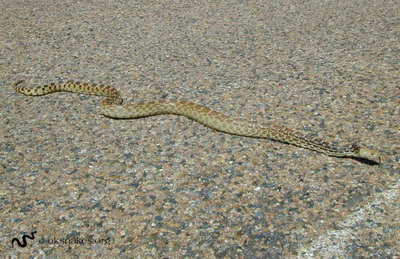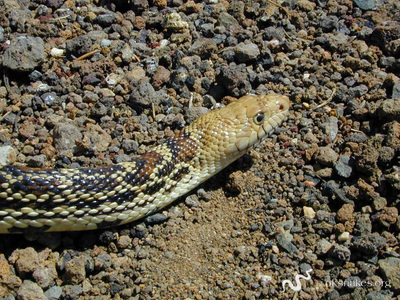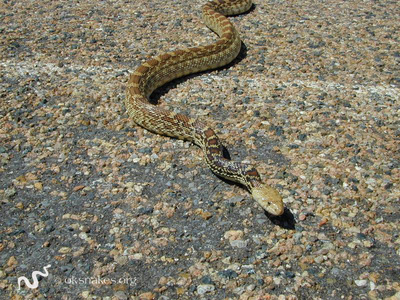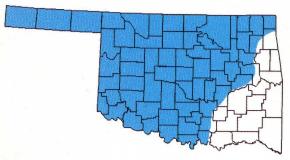Bullsnake
Pituophis catenifer sayi
Pituophis catenifer sayi
HARMLESS
Description:
Has a yellow to tan-colored body with dark brown blotches that run down the center of its back. The sides are peppered with many smaller brown blotches, and the belly is yellow with dark spots. The scales are keeled and the anal plate is single.
Size:
Adults 48 - 72 inches (122 - 183 cm)
Prey:
Rodents, birds, and lizards
Reproduction:
Mates in spring and lays a clutch of 3 - 25 eggs in early summer. Eggs hatch in 2 months and hatchlings are 12 - 18 inches (30 - 46 cm) long.
Habitat:
Prairies, pine-oak woodlands, fields, and open brushland.
Other Information:
This snake is usually active in the daytime, but sometimes hunts at night during hot weather. It is widely known for its excellent rodent catching prowess. When disturbed, this snake may vibrate or buzz its tail, and may also hiss and/or bite.
Why doesn't the range map show this species in my county?
Description:
Has a yellow to tan-colored body with dark brown blotches that run down the center of its back. The sides are peppered with many smaller brown blotches, and the belly is yellow with dark spots. The scales are keeled and the anal plate is single.
Size:
Adults 48 - 72 inches (122 - 183 cm)
Prey:
Rodents, birds, and lizards
Reproduction:
Mates in spring and lays a clutch of 3 - 25 eggs in early summer. Eggs hatch in 2 months and hatchlings are 12 - 18 inches (30 - 46 cm) long.
Habitat:
Prairies, pine-oak woodlands, fields, and open brushland.
Other Information:
This snake is usually active in the daytime, but sometimes hunts at night during hot weather. It is widely known for its excellent rodent catching prowess. When disturbed, this snake may vibrate or buzz its tail, and may also hiss and/or bite.
Why doesn't the range map show this species in my county?
